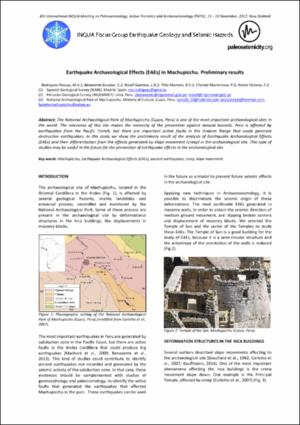Please use this identifier to cite or link to this item:
https://hdl.handle.net/20.500.12544/2420Files in This Item:
| File | Description | Size | Format | |
|---|---|---|---|---|
| Rodriguez-Earthquake_archaeological_effects_(EAEs)_Machupicchu.pdf | Artículo de congreso | 742.52 kB | Adobe PDF | View/Open |
This item is licensed under a Creative Commons License












